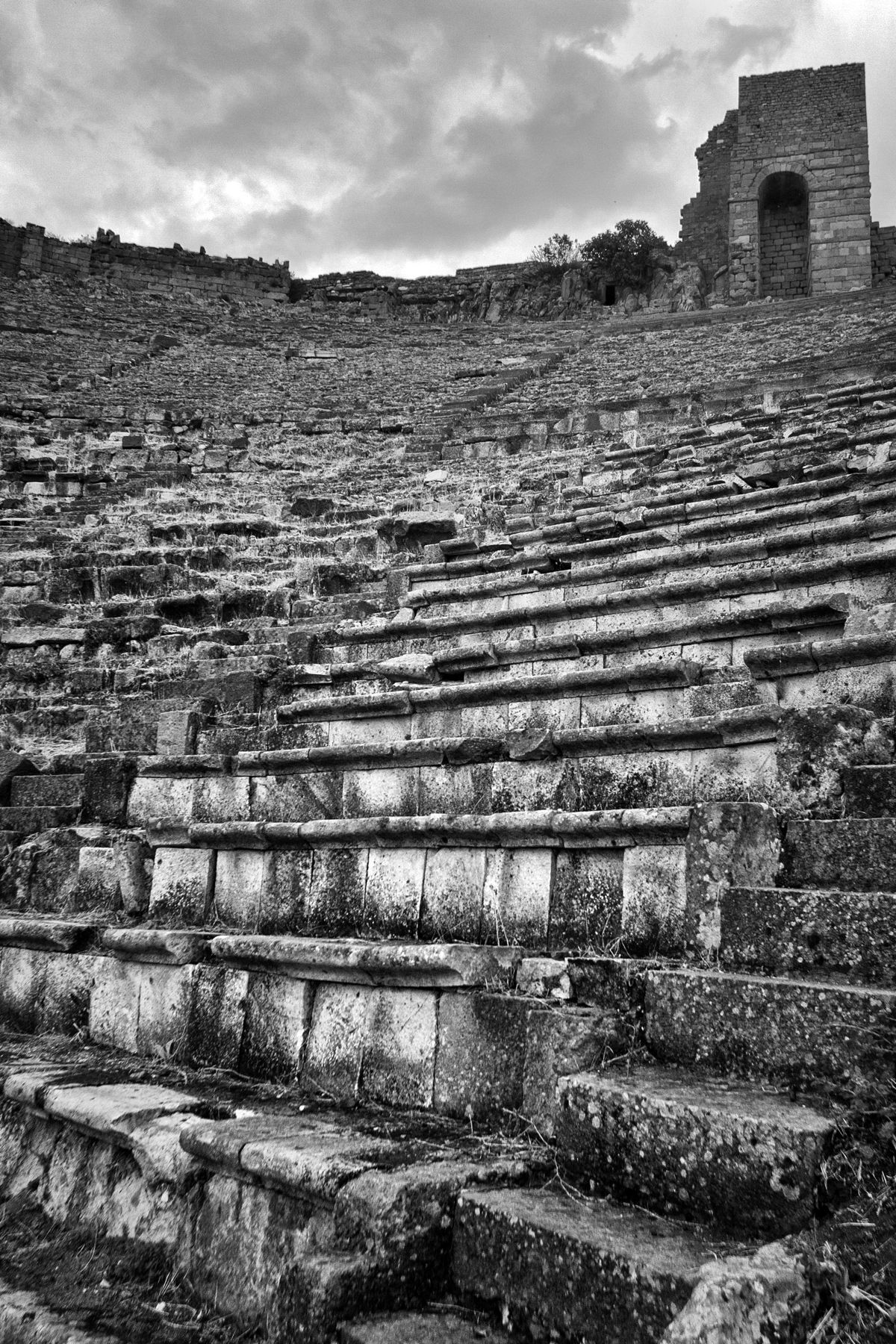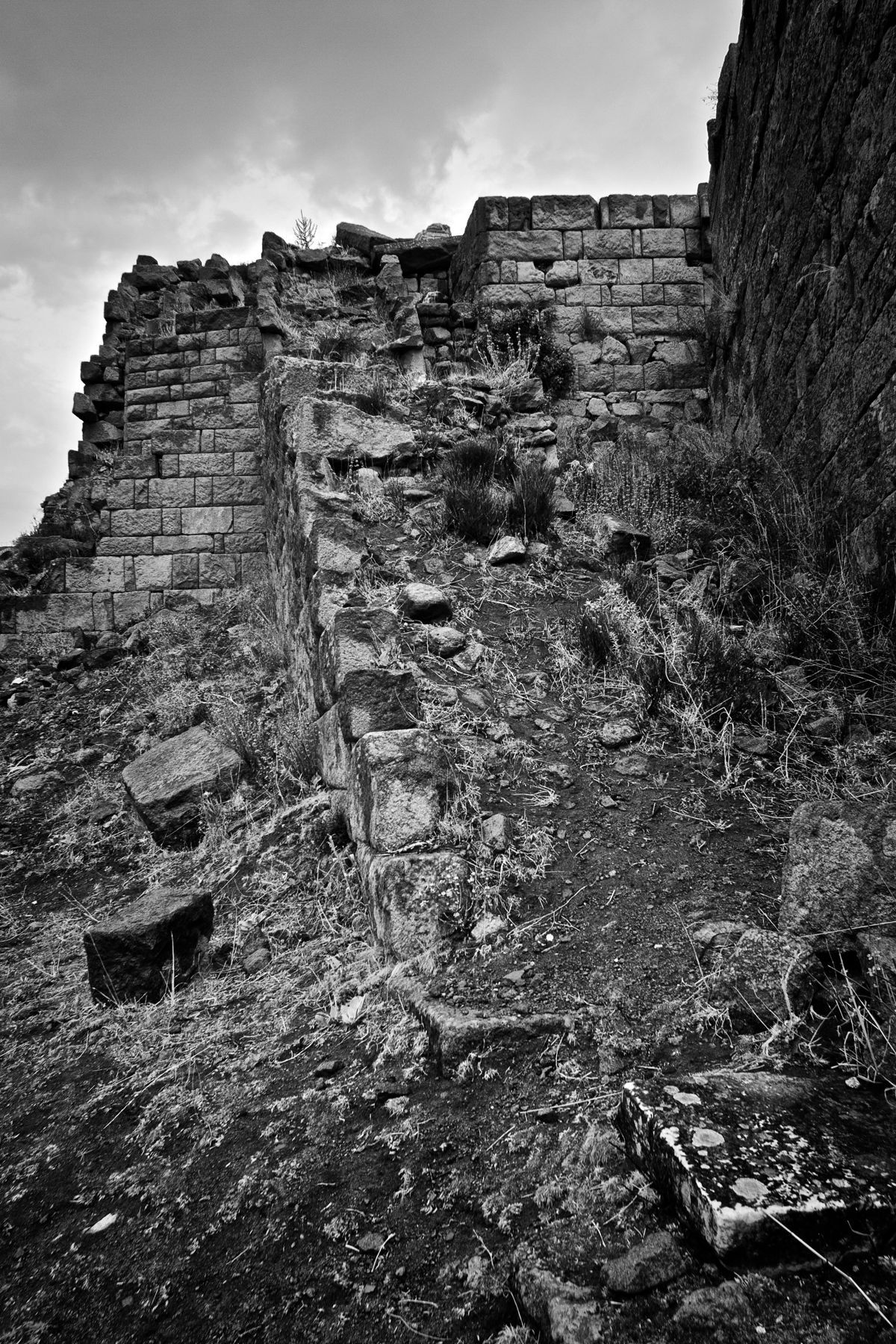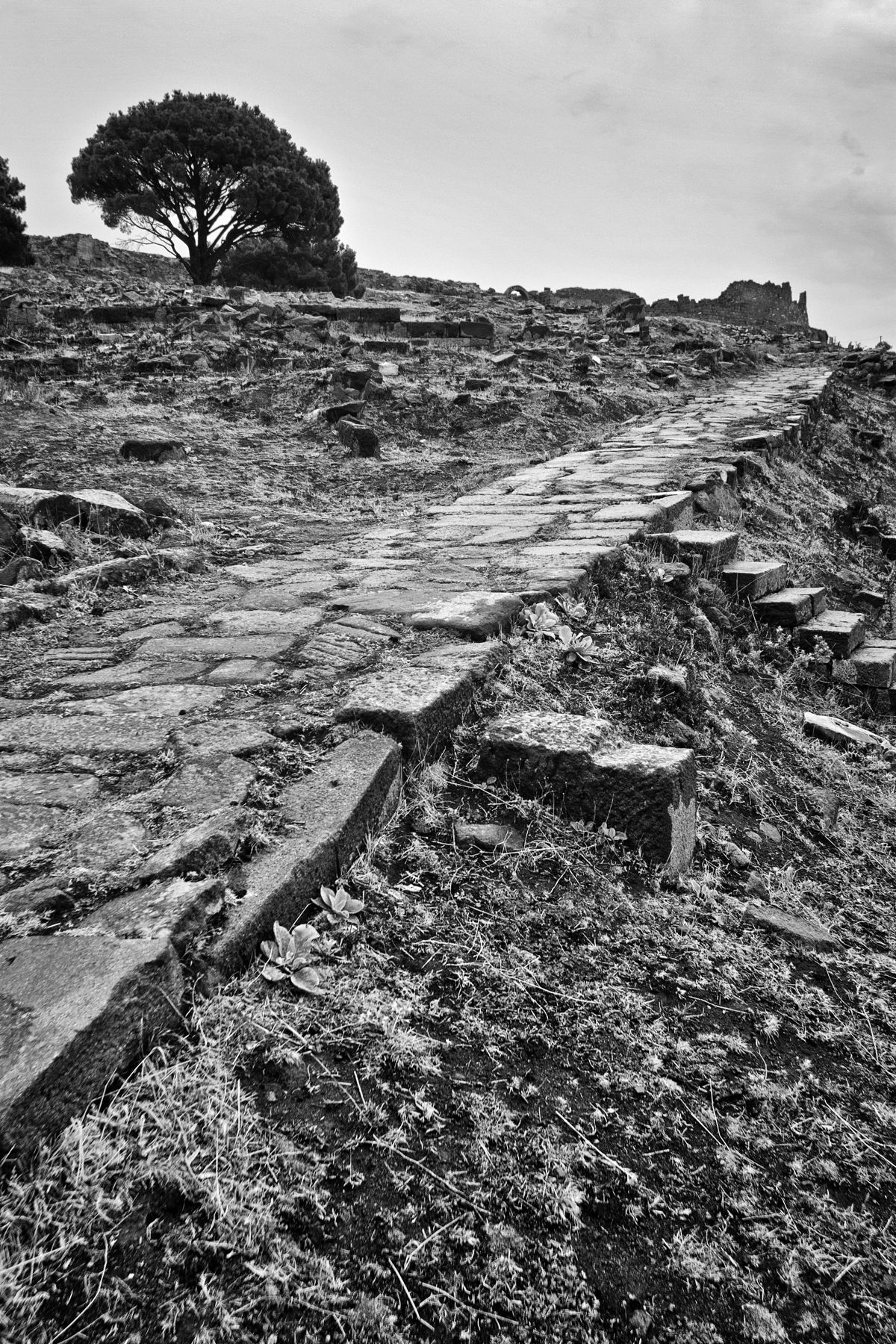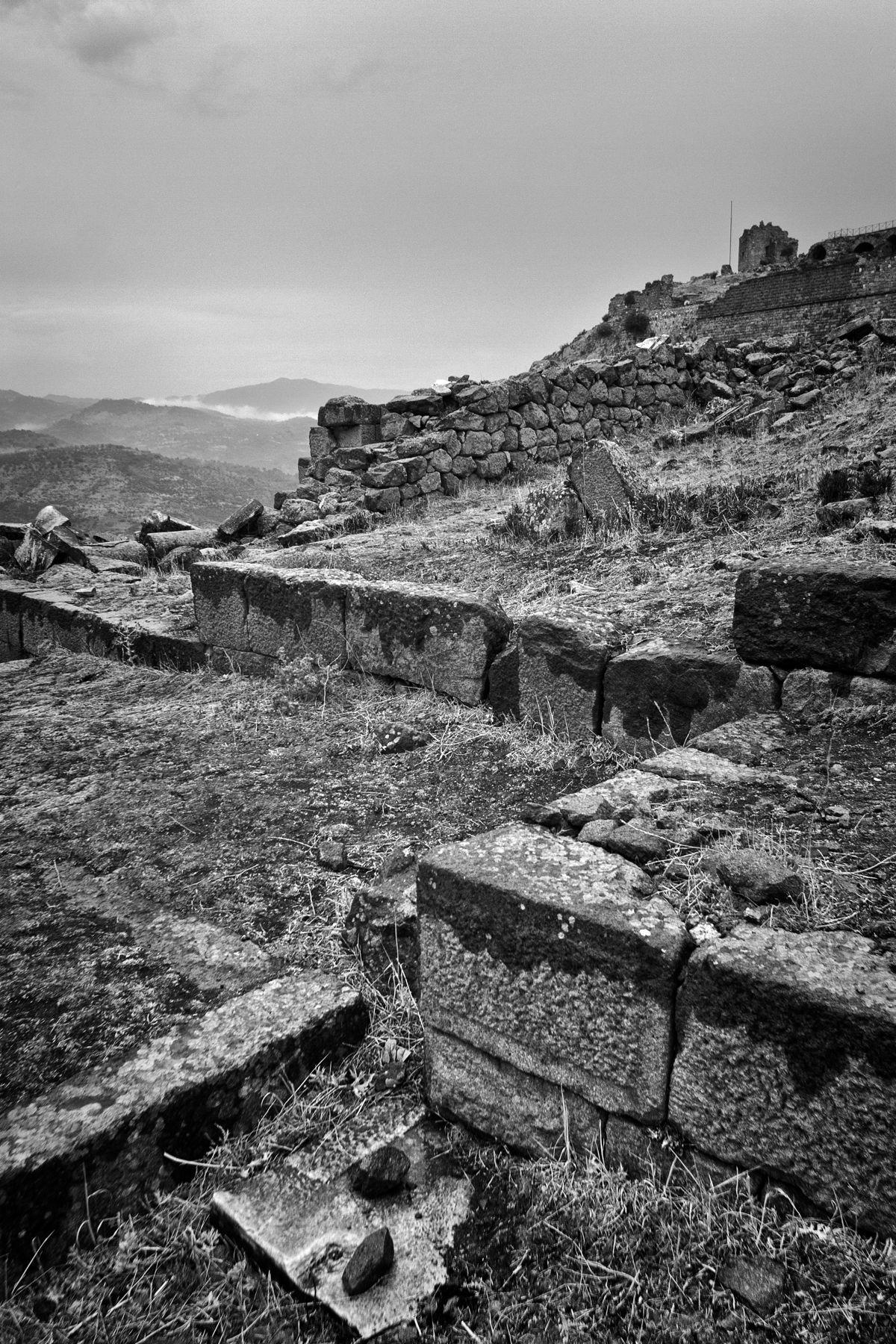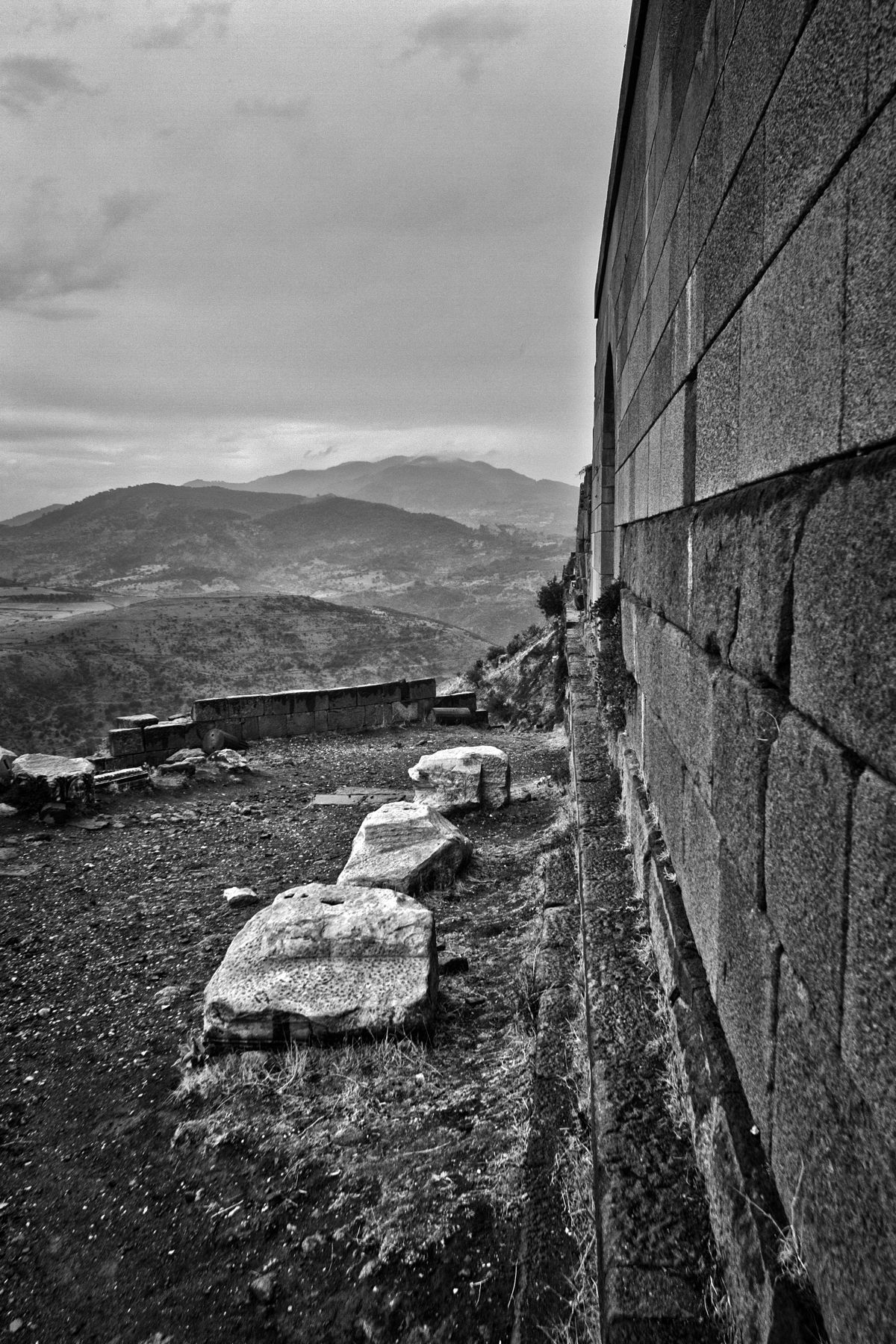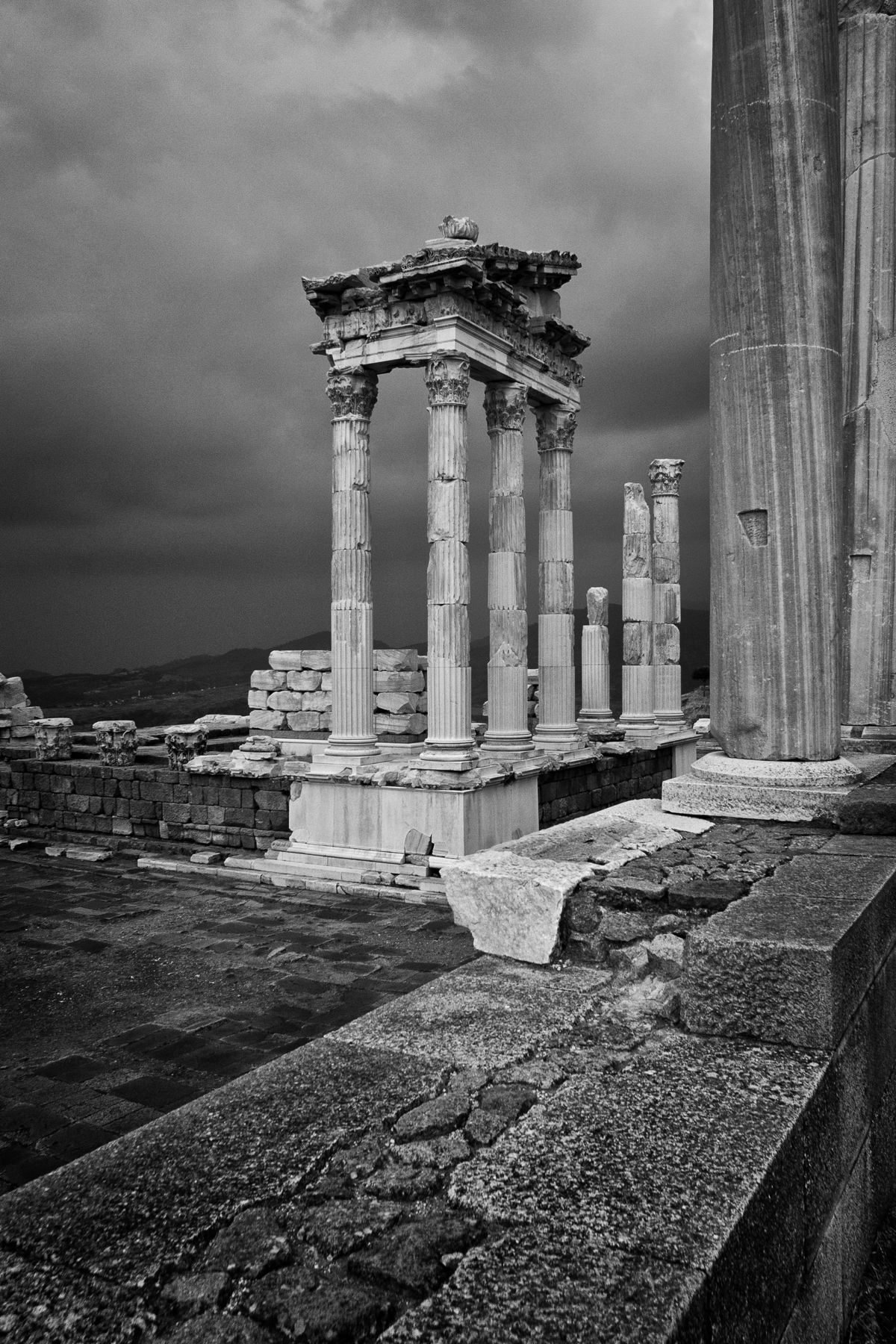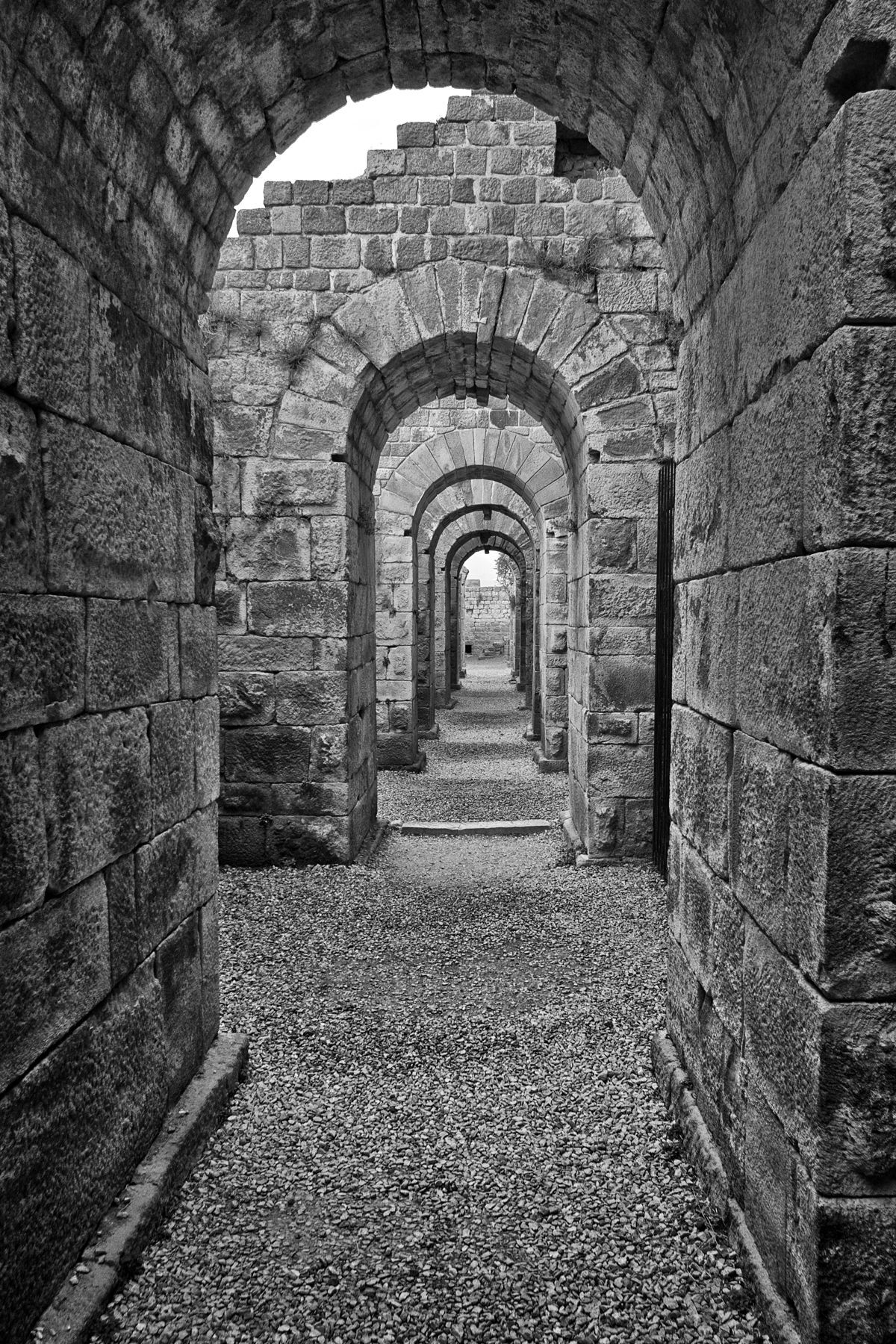"Måla med ljus"
The ancient ruins of Pergamum

All that is left of the ancient city Pergamum are worn and looted ruins. The main sites of Pergamum are to the north and west of the modern city of Bergama in Turkey.

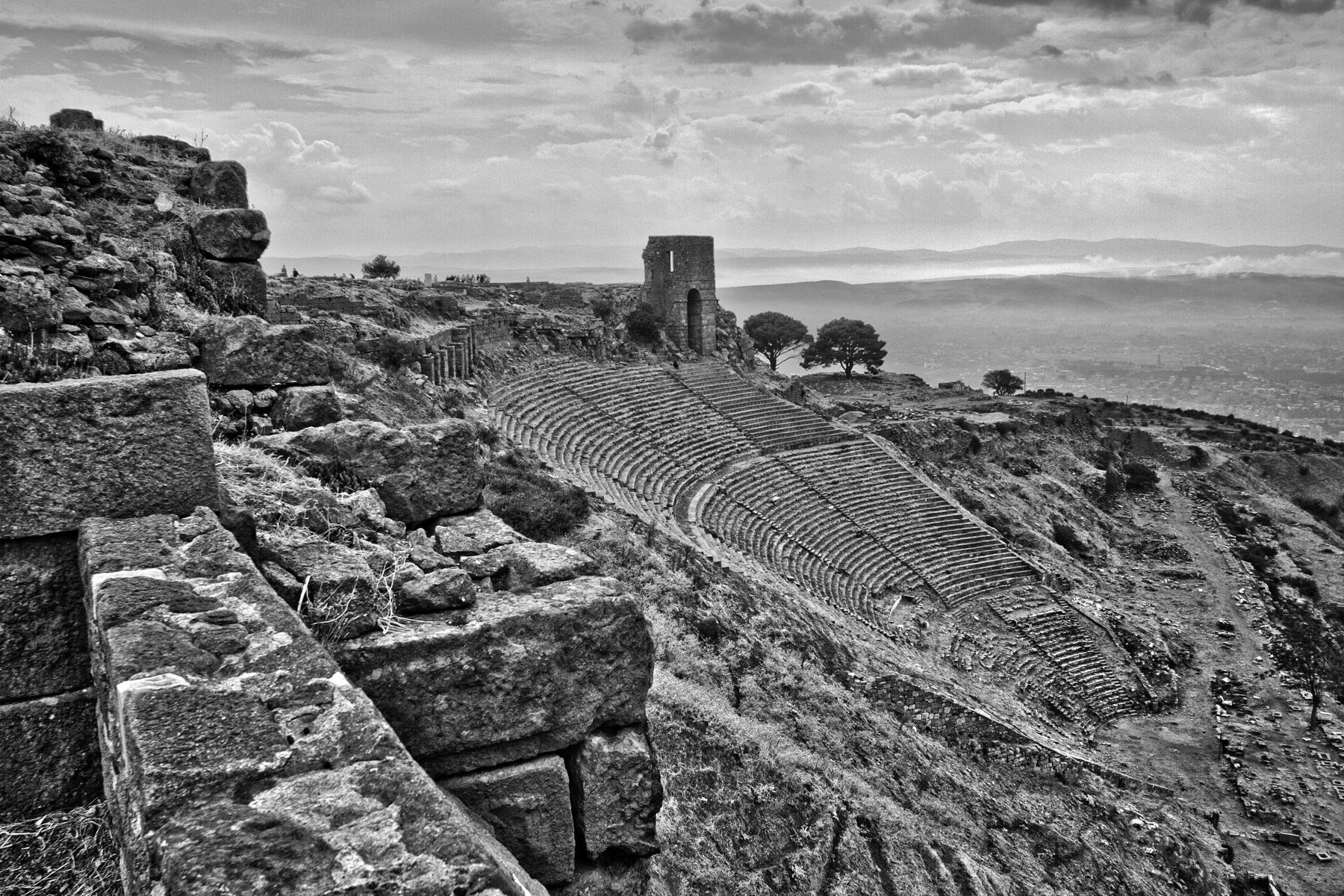
Pergamum lies on the north edge of the Caicus plain in in the northwest of Turkey. Even if the town was once known for it's beauty it was also one of the darkest and greediest cities in the Roman Empire. The town was a political, religious, cultural and economical center in the Roman province Asia Minor.
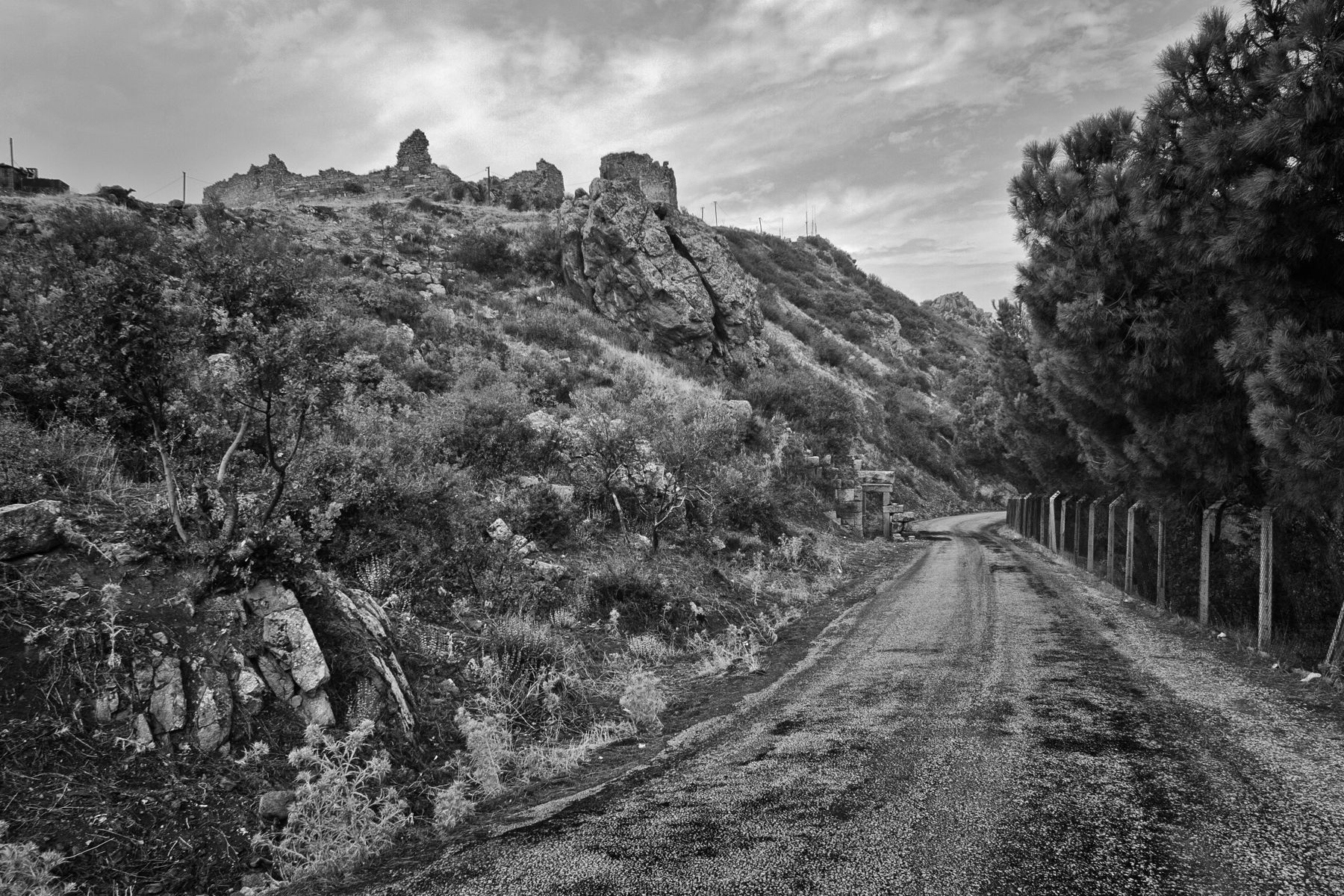
Pergamum had three temples that was dedicated to the worship of the Roman emperor, it had one temple for the goddess Athena, and the Great Altar of Zeus, the king of the Greek gods was also located in the city. The Altar of Zeus, is believed to be the Throne of Satan which is mentioned in the book of Revelation.
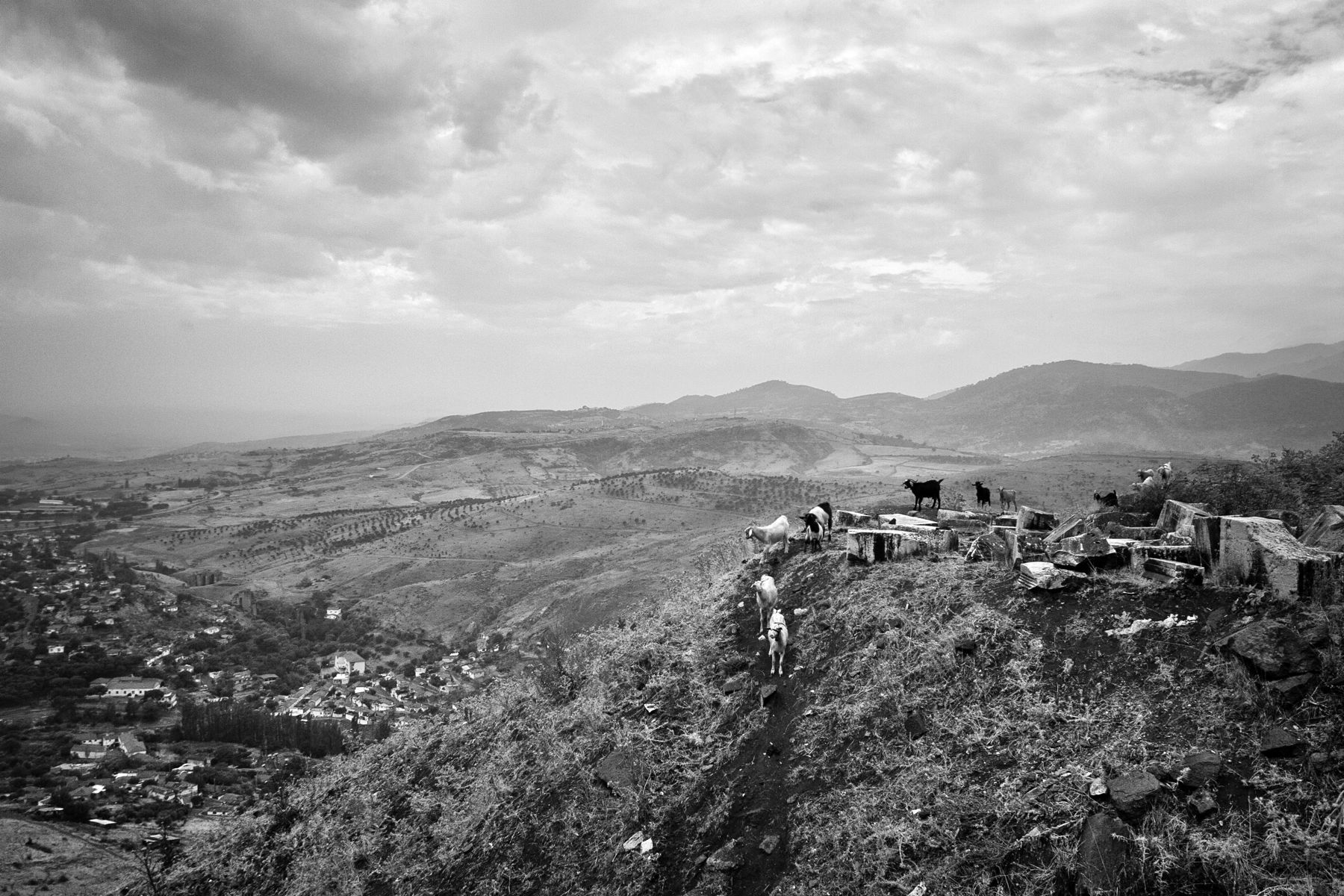
Pergamum was one of the most influential cities in the Empire. Pergamum was also the center for worship of the Roman Emperor who was believed top be part God and part human in ancient times. In 385, Christianity became the state religion in the Roman Empire and after that Pergamum lost its status and the city decreased in size. In the end, only the fortified Acropolis remained, but it was abandoned during the Byzantine period. And the city was slowly turned into ruins.
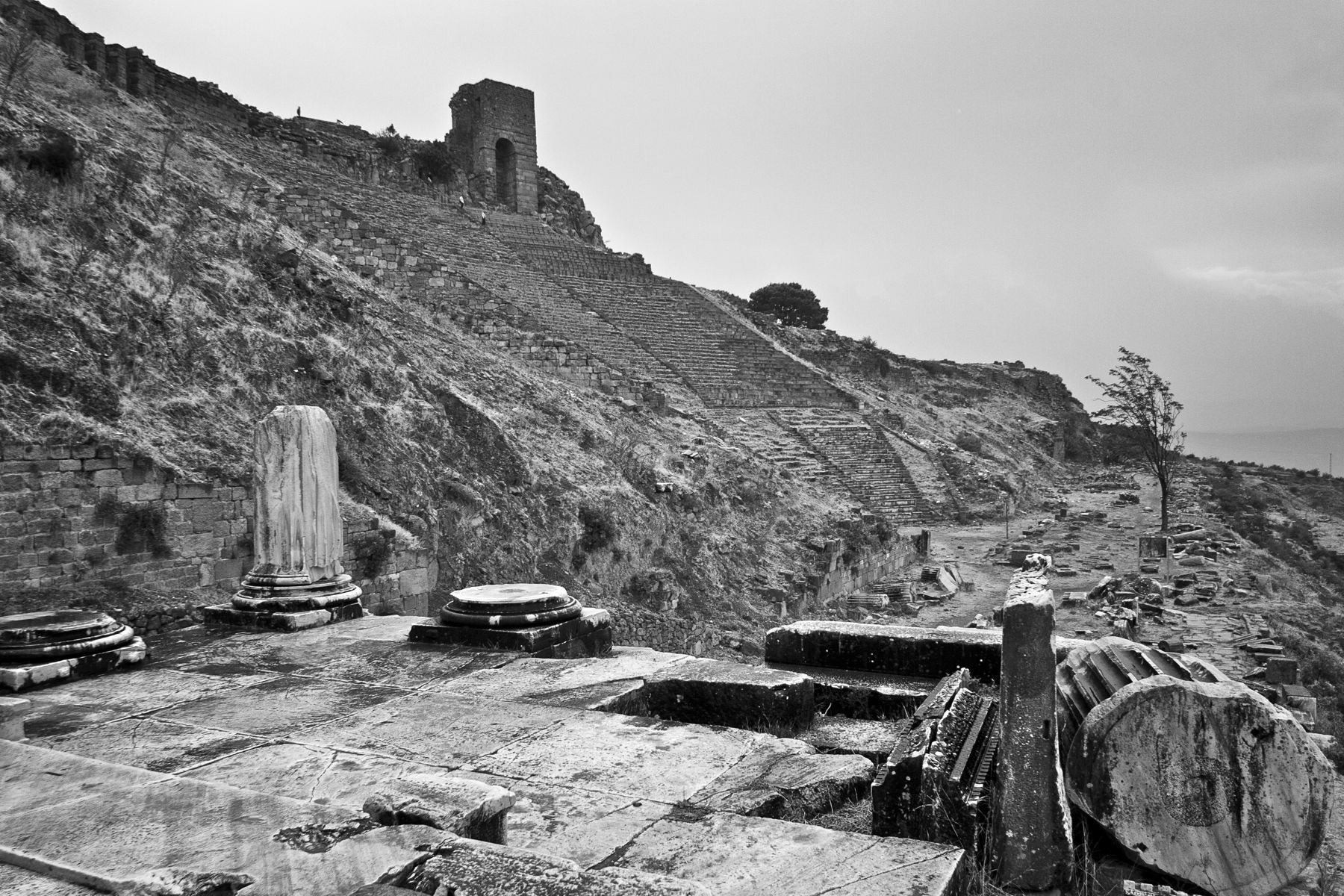
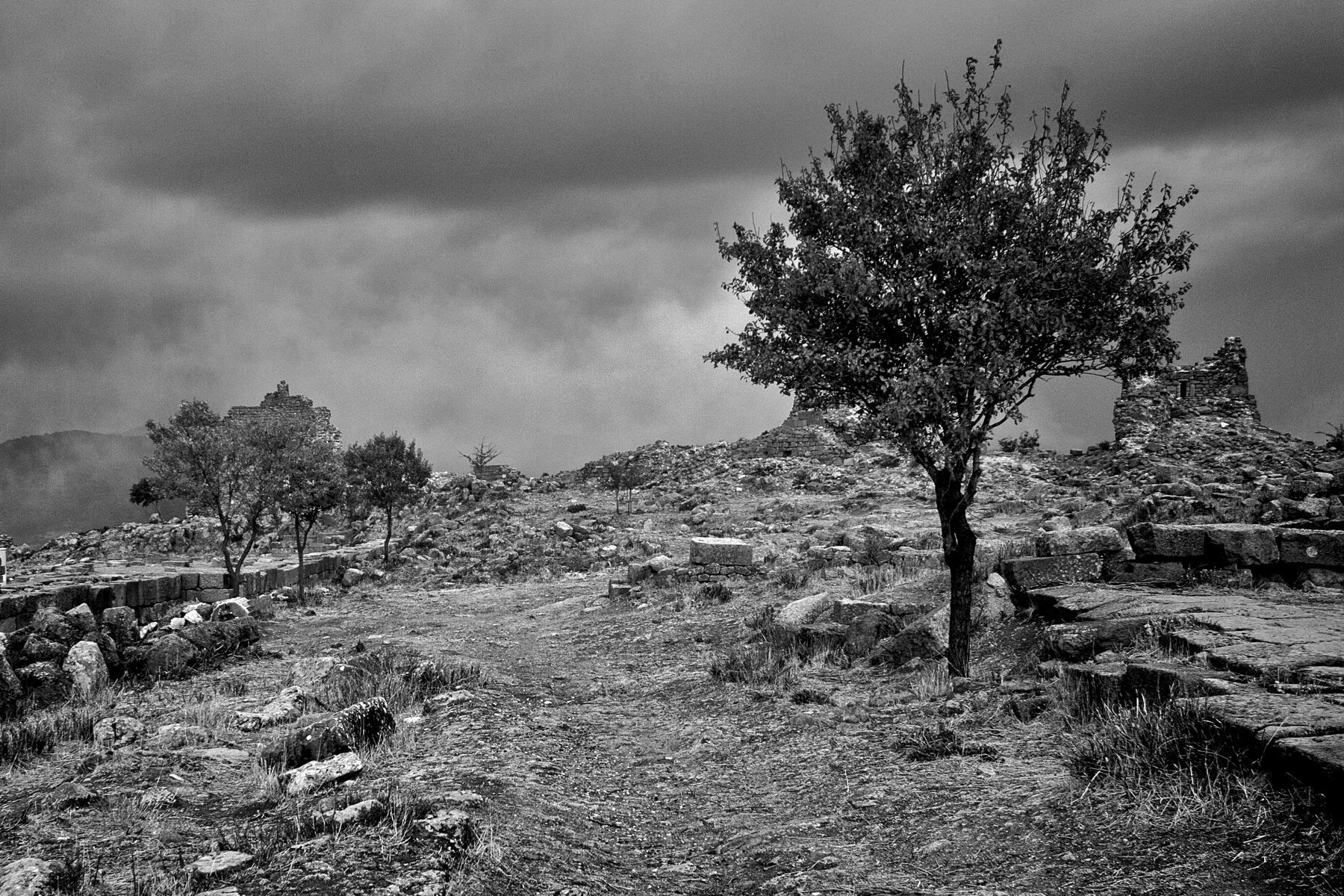
After that, the city slowly fell into oblivion. The new city of Bergama was built on the slope of the old city. Some stone was taken from the older city. 1878-86 excavations were made at the expense of the Prussian state and many of the finds from excavations together with The Altar of Zeus were moved to Berlin. Today is Pergamum a popular tourist site. And in 2014 was Pergamum added to UNESCO World Heritage List.
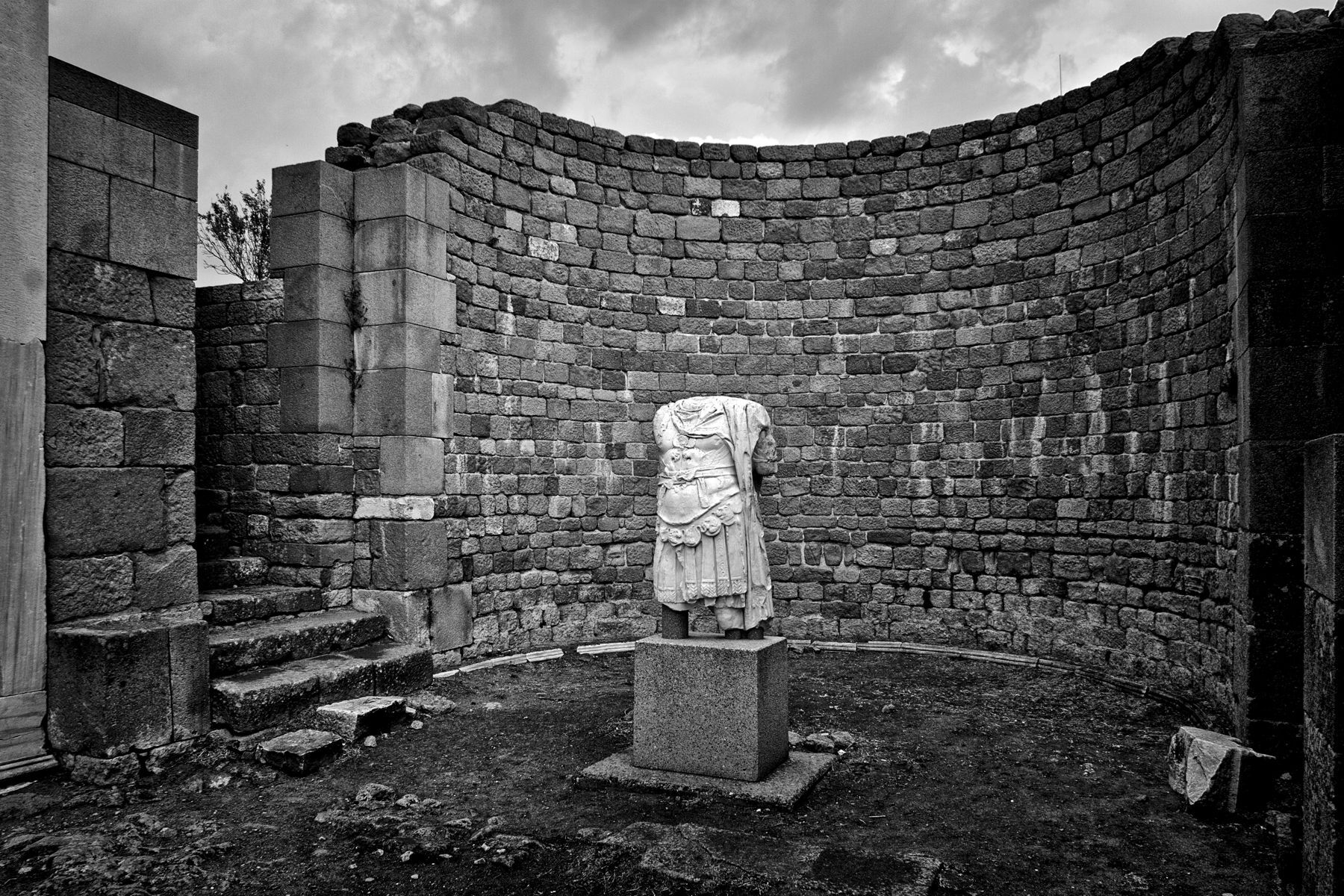
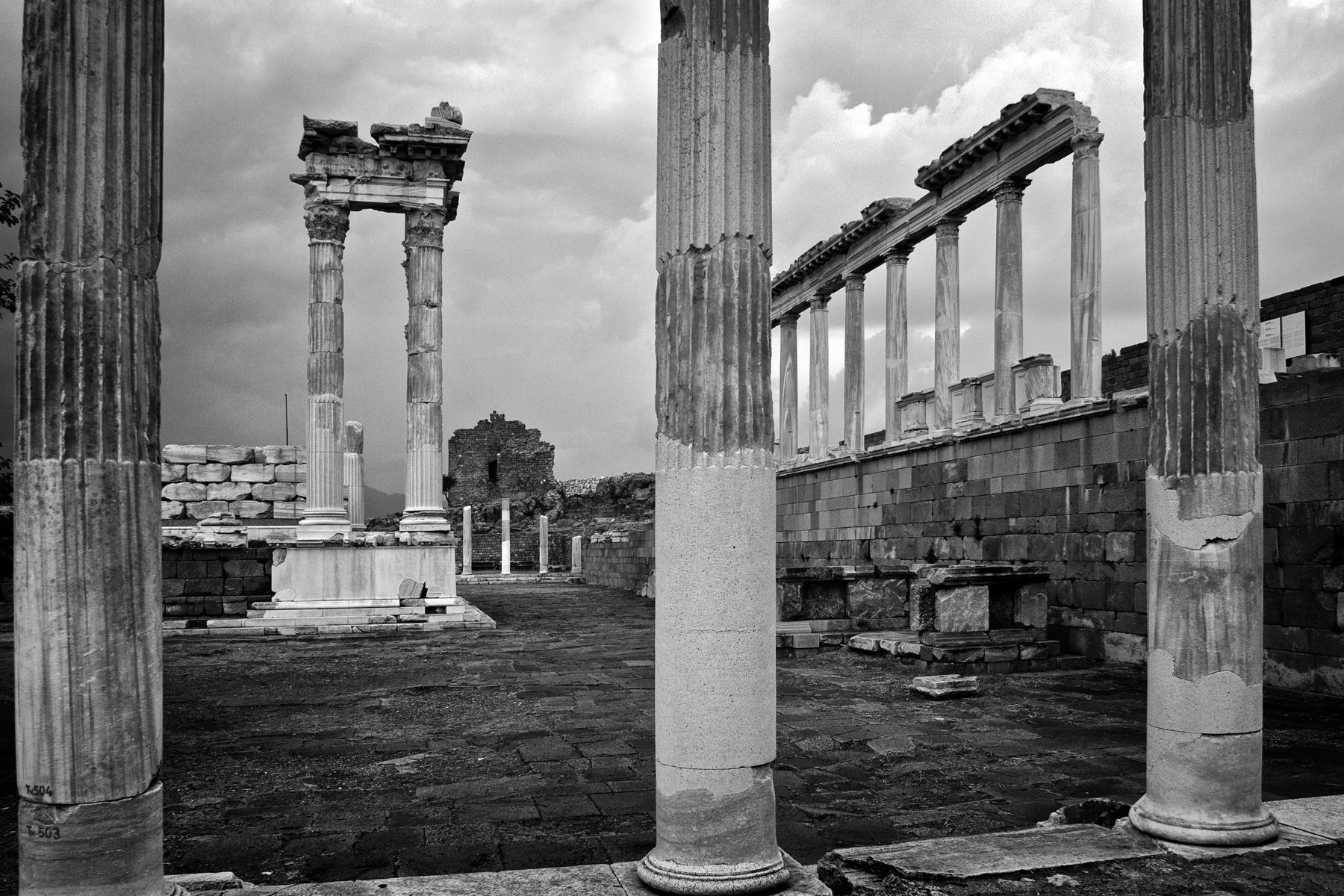
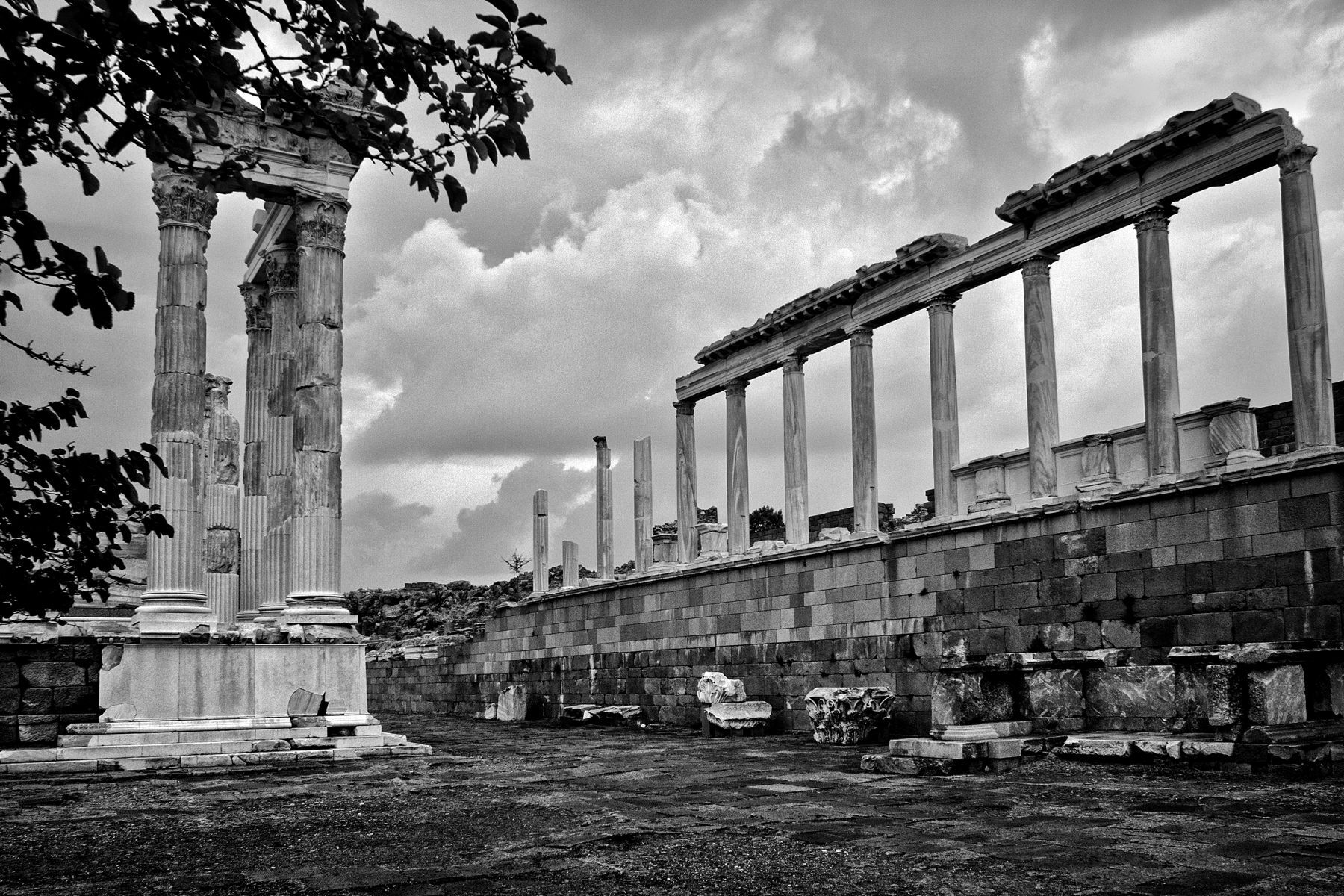




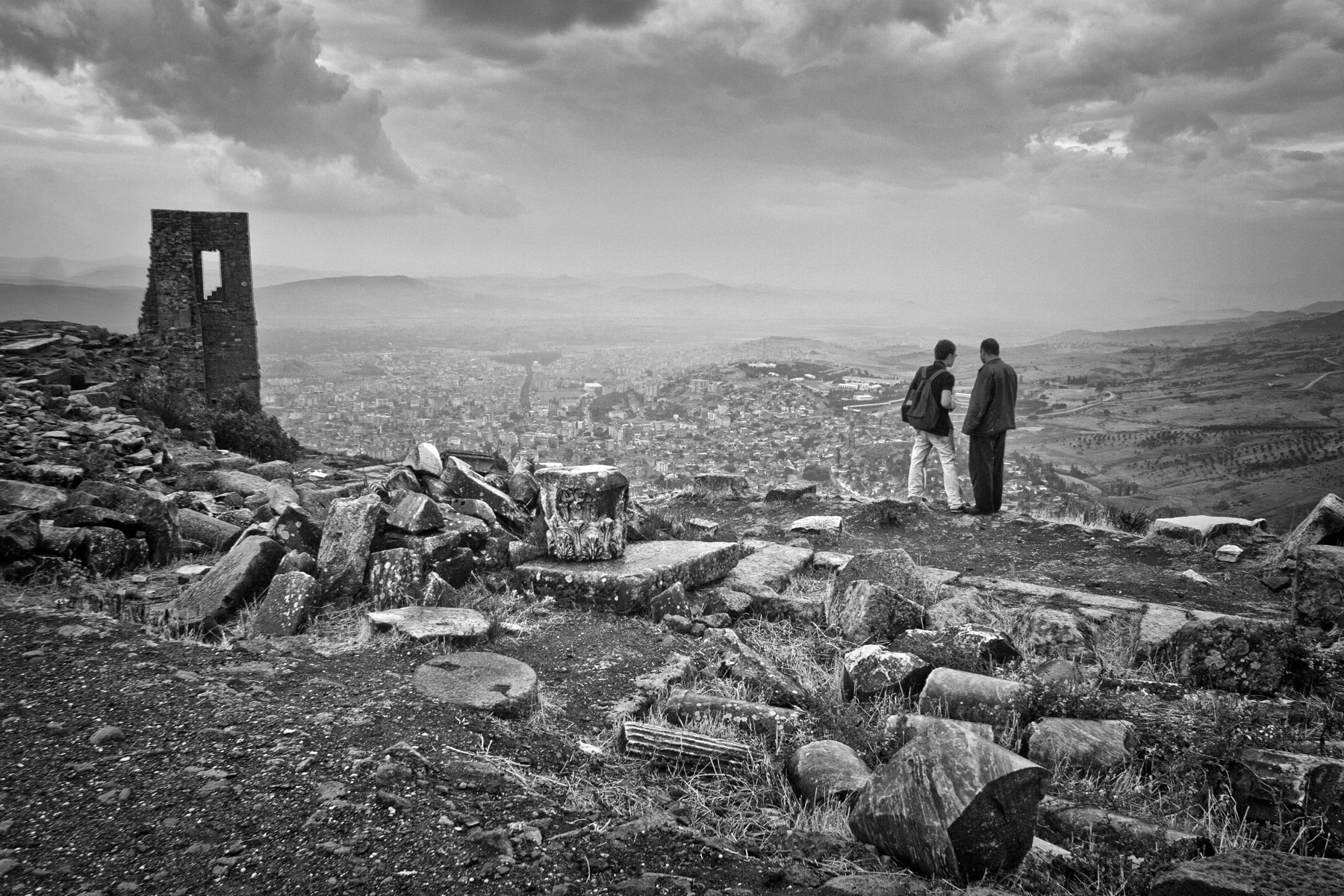
Text and Photo: Mikael Good
Det värsta året i mänsklighetens historia

Tycker du att 2020 är hemskt? Då skulle du levt år 536! Det året räknas av många historiker och arkeologer som det värsta i mänsklighetens historia, med pest, svält och krig. Katastrofer som ledde fram till ett mycket turbulent århundrade som kom att forma mycket av den världsordning som vi har idag.
Många människor som levde år 536 var övertygade om att apokalypsen kommit och att jordens och mänsklighetens undergång var nära förestående. Men jorden gick inte under och det har gått drygt 1500 år sedan dess. Även om vi har kommit ytterligare några steg närmare undergången så tror jag fortfarande att mänskligheten har många år kvar tills apokalypsen inträffar.
Följande länk leder till dokumentären ”Why Was 536 A.D The Worst Year In History?” som producerats av 3BM Television Limited. I programmet försöker arkeologen David Keys röna ut orsakerna till den världsvida hungersnöden som ledde till krig och elände över hela jorden. Se den gärna, då den sätter perspektiv på saker och ting, men precis som med allt annat måste man se den med ett litet kritiskt öga, och dubbelkolla en del information: https://youtu.be/0JBdedLx-GI
Text och foto: Mikael Good
Hårddisk fynd från Turkiet

Jakten efter en bild på en turkisk flagga till en nyhetsartikel, fick mig att hitta några halvt bortglömda dokumentärbilder från den Turkiska staden Aylavik.
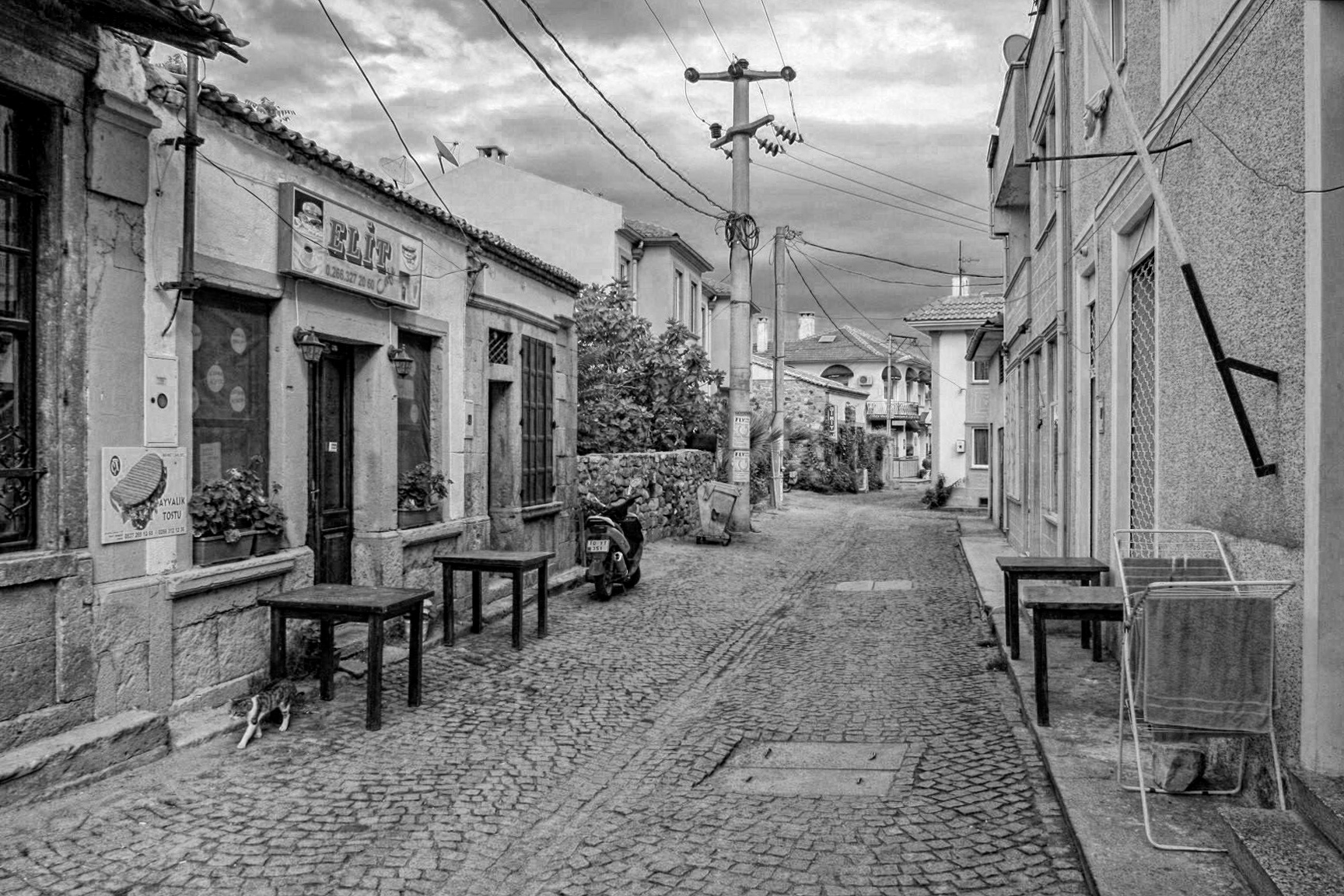
Genom åren har jag samlat på mig mängder av digitalbilder. Och jag har fullt sjå att försöka hålla koll på dem och sortera upp dem där de ska vara. Men i somras tog jag tag i saken och köpte ett antal 4 TB hårddiskar som jag kunde kopiera över mina äldre bilder på, och samtidigt fick jag lite bättre koll på var jag hade mina bilder.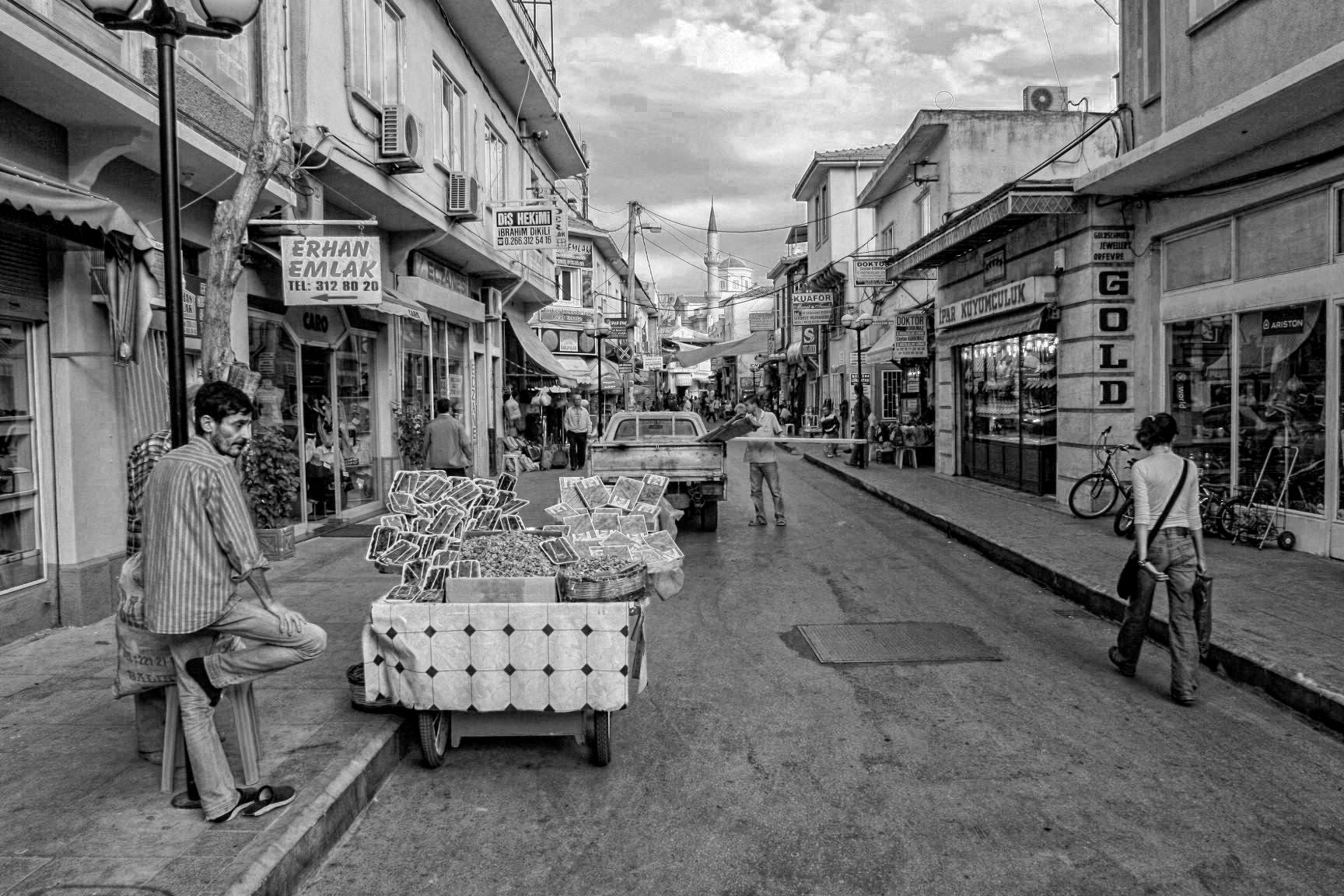
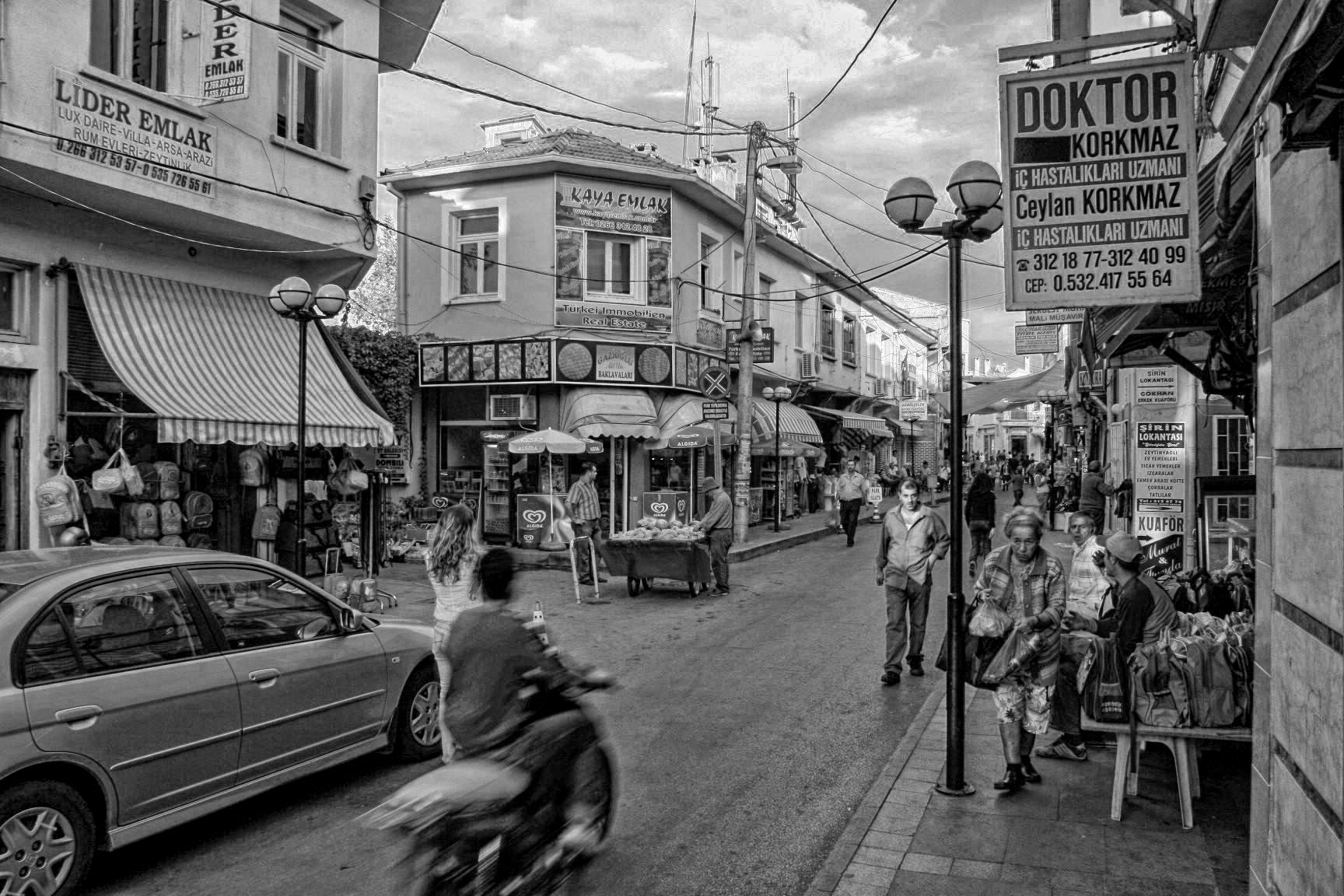
Nyligen fick jag en förfrågan om jag hade någon bra bild på en turkisk flagga? Jag ville minnas att jag hade en sådan bild från en resa till landet hösten 2006. Tack vare att jag hade sorterat upp de äldre bilderna kunde jag snabbt hitta bilden som jag sökte. Men innan jag fann den fick jag upp ögonen för några bilder som jag tog under en semesterresa till den turkiska staden Aylavik i slutet av september 2006. 

Aylavik är en stad med 37 000 invånare som ligger vid Turkiets västra kust mitt emot den grekiska ön Lesbos (som kan ses på översiktsbilden). I närheten av staden finns ruinerna av tre viktiga antika städer; Assos, Troja och Pergamon. Jag hade tyvärr inte möjlighet att besöka vare sig Assos eller Troja, men spenderade en heldag i Pergamon.
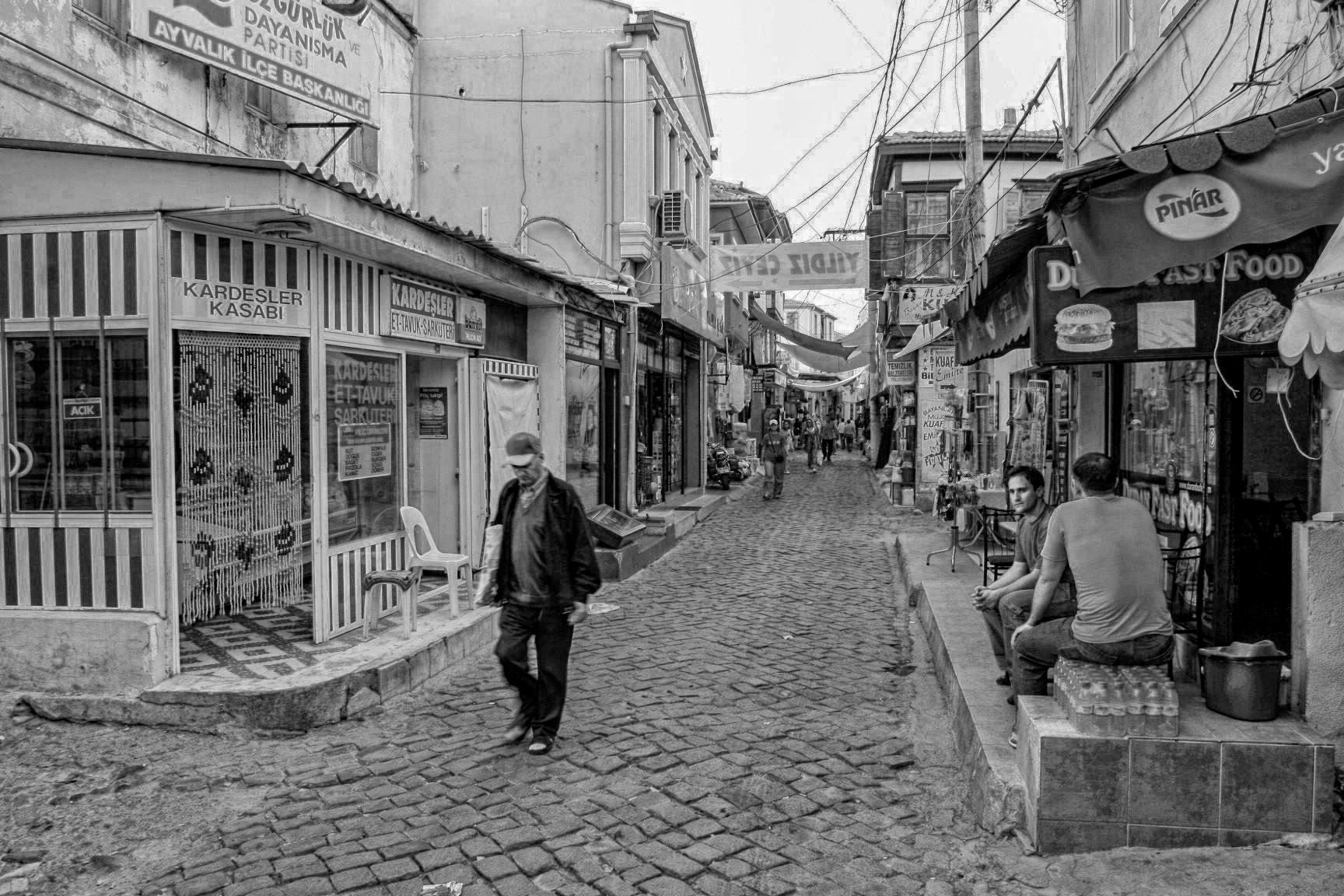
Det kanske inte är de bästa bilderna som jag tagit men trots att de bara är 13 år sedan jag tog dem har de redan ett dokumentärt värde, då de togs i en tid då Turkiet fortfarande var en demokrati. Jag använde en Canon EOS 20D med ett Tokina 17/3,5 till bilderna från Aylavik.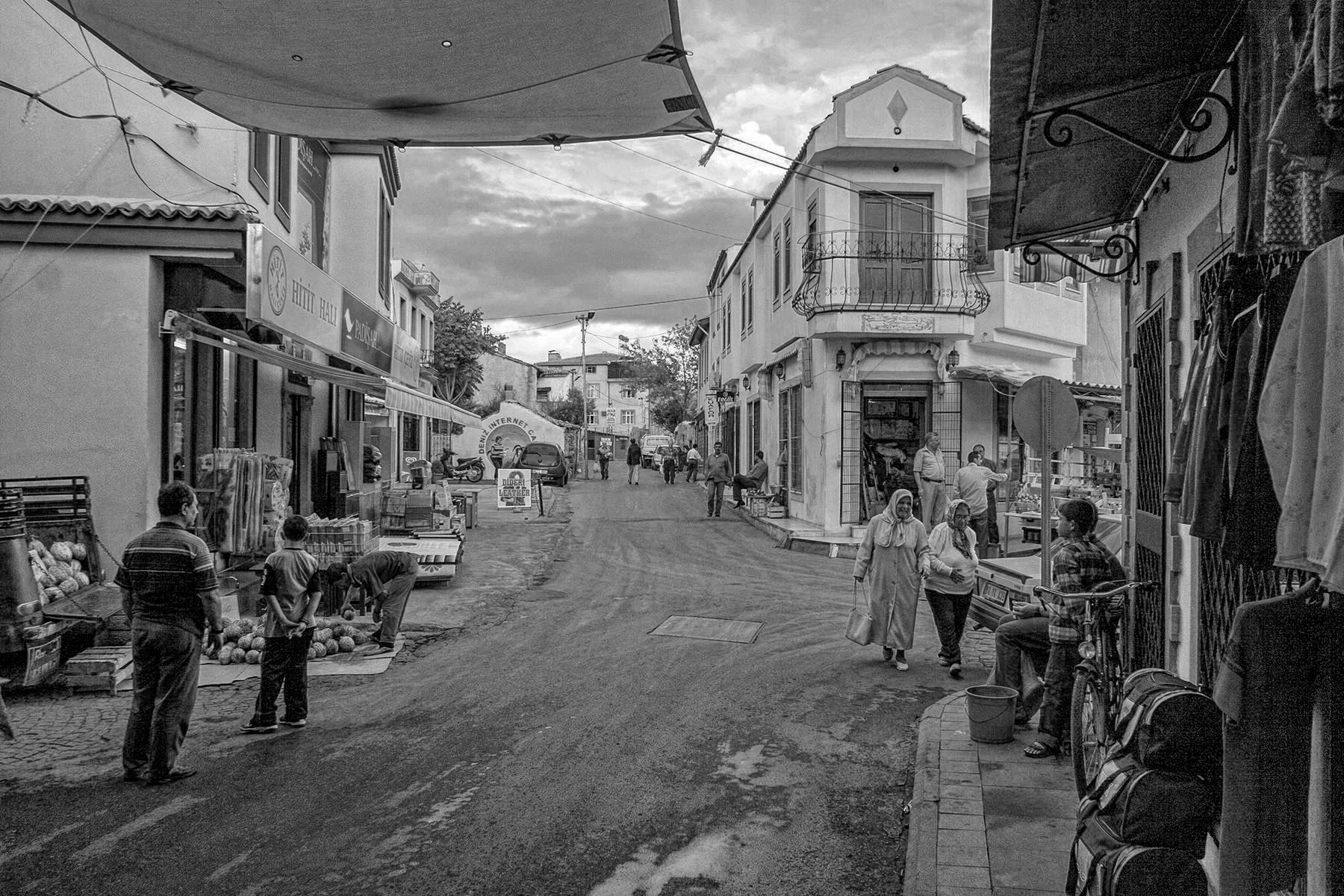
Text och foto: Mikael Good
Satan's throne has been moved to Berlin

All that is left of the ancient city Pergamum are worn and looted ruins. The main sites of Pergamum are to the north and west of the modern city of Bergama in Turkey. Even if the town was known for it's beauty it was also one of the darkest and greediest cities in the Roman Empire. Because it was a political and economical center in the province Asia Minor the city had a unique status that differed it from other cities in the Roman Empire. Pergamum was one of the most influential cities in the Empire and a also the center for worship of the Roman Emperor who was believed to be part God and part human in ancient times.

There was also a temple for worship of the Wargodess Athena. But the most important altar for worship in the City was the Great Altar of Zeus which is also mentioned as the Throne of Satan in the Book of Revelation in the Bible: “To the angel of the church in Pergamum write: ‘I know your works, and where you dwell... where Satan’s throne is. And you hold fast to my name, and did not deny my faith even in the days in which Antipas was my faithful martyr, who was killed among you, where Satan dwells - Revelation 2:12

In 1878 the German engineer Carl Humann started to dismantle the Altar of Zeus from the since long abandoned city of Pergamum and took it to Berlin. The altar was stored until the building of a new museum in Berlin started in 1910. Due to war and economic depression in Germany the museum was not opened for visitors until 1930. The Great Altar of Zeus or the Throne of Satan that some people call it went on display in Berlin's Pergamon Museum in 1930 together with a reconstruction of the Ishtar Gate of ancient Babylon. The Ishtar Gate are also known as the gates of hell.

It might just be a awful coincidence but just three years after the grand opening of the museum Germany experienced a revival from hell when Adolf Hitler became the Chancellor of Germany and soon it's dictator and Führer. Adolf Hitler decided to commission the young architect Albert Speer to design the new parade grounds for his big party rallies in Nuremberg. Albert Speer took the inspiration from the Great Altar of Zeus in Berlin when he designed the colossal altar for his Führer. The altar became known as the Zeppelintribüne and it was here that Adolf Hitler received the adoration of the masses at the political rallies in Nuremberg like so many Roman Emperors had done before him. I am convinced that Adolf Hitler was deceived to think that he was both man and god when he stood on top of his altar in Nuremberg and received deafening salutations from hundreds of thousand devoted followers that would soon follow him into death.
The good old Canon EOS 20D are still a really good and capable camera as you can see in my pictures from Pergamum: https://www.flickr.com/photos/chasid68/sets/72157645293175751/
Text and Photo: Mikael Good


